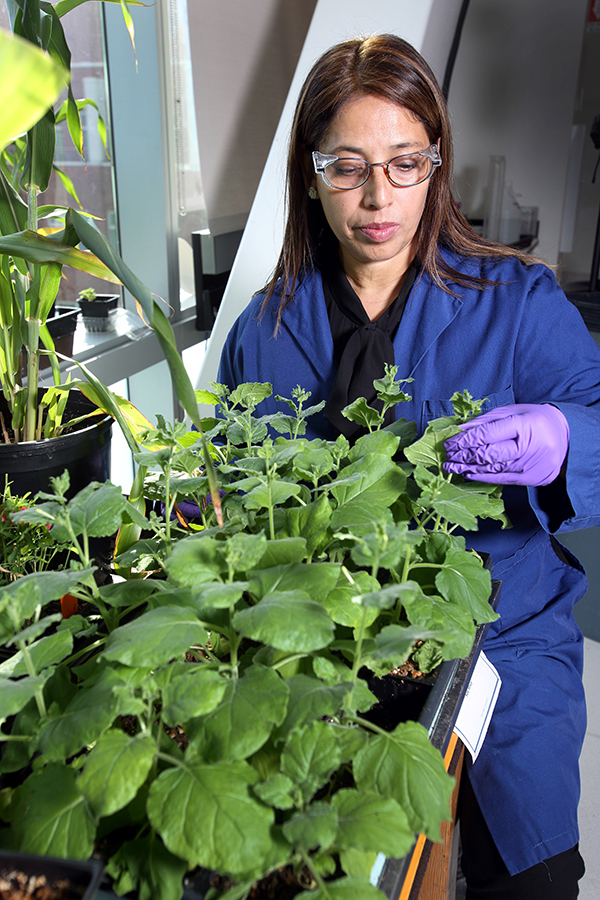Sandia speeds transformation of biofuel waste into wealth

A Sandia-led team has demonstrated faster, more efficient ways to turn discarded plant matter into chemicals worth billions. The team’s findings could help transform the economics of making fuels and other products from domestically grown renewable sources.
Lignin, the tough material left over from biofuel production, contains compounds that can be converted into products like nylon, plastics, and drugs. It is one of the main components of plant cell walls, and gives plants structural integrity as well as protection from microbial attacks.
Products made from converted lignin could subsidize biofuel production, making the cost of biofuels more competitive with petroleum. Unfortunately, lignin’s toughness also makes it difficult to extract its valuable compounds. Scientists have wrestled for decades with deconstructing it. As a result, lignin often sits unused in giant piles.
Sandia bioengineer Seema Singh and her team have demonstrated two new routes to lignin conversion that combine the advantages of earlier methods while minimizing their drawbacks. The team’s recent findings are described in the journal Scientific Reports.
A chemical/biological hybrid path forward
To break the bonds between compounds that make up lignin, scientists have either employed chemicals or tiny organisms such as bacteria or fungi. The gentler biological methods do enable the production of specific targeted compounds. But to fully break down lignin using this approach can take weeks or even months.
Conversely, harsh chemicals can deconstruct lignin in hours or even minutes. But this method requires expensive catalysts and is sometimes toxic, and therefore unsustainable. Worse, chemical methods lead to a mixture of compounds that each appear in extremely small quantities.
“You get a little bit of a whole lot of various chemicals when you break down lignin this way,” Seema says. “The quantities yielded are not terribly useful.”
Her team has demonstrated two new techniques that incorporate the speed of a chemical method and the precision of a biological one. In both cases, Seema’s team ultimately produced high-value chemicals that